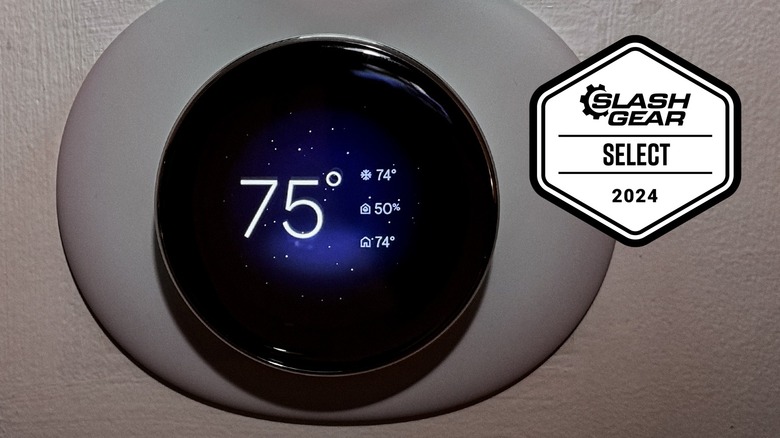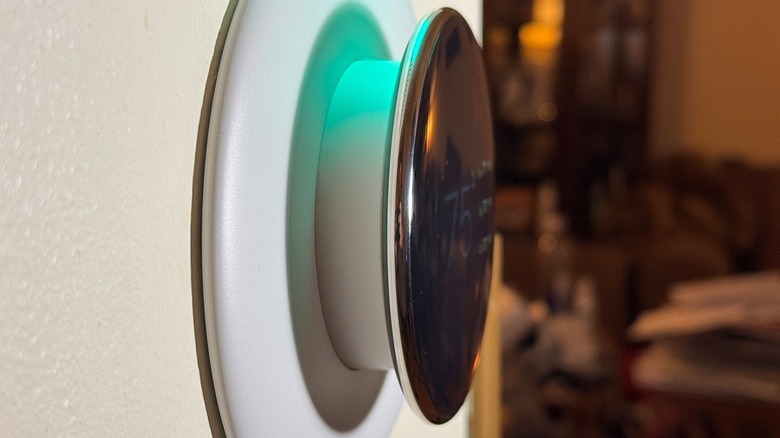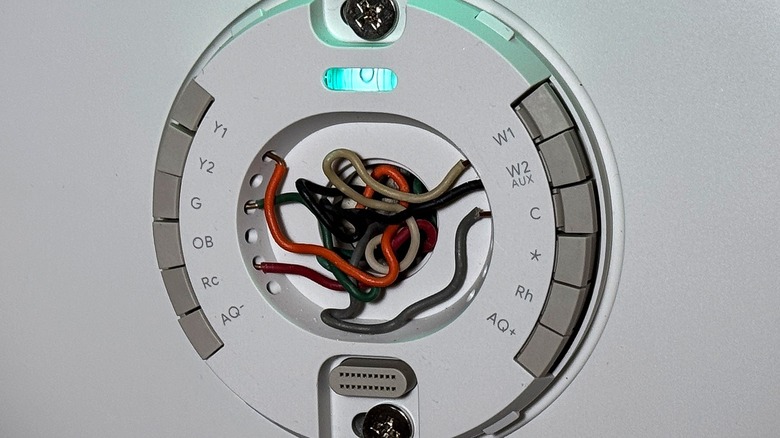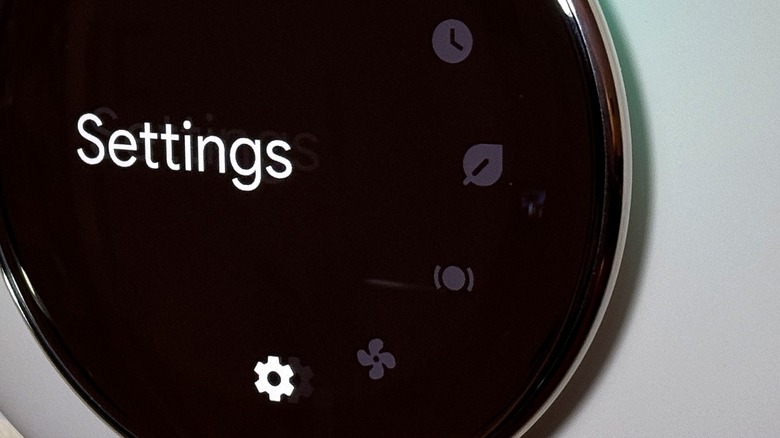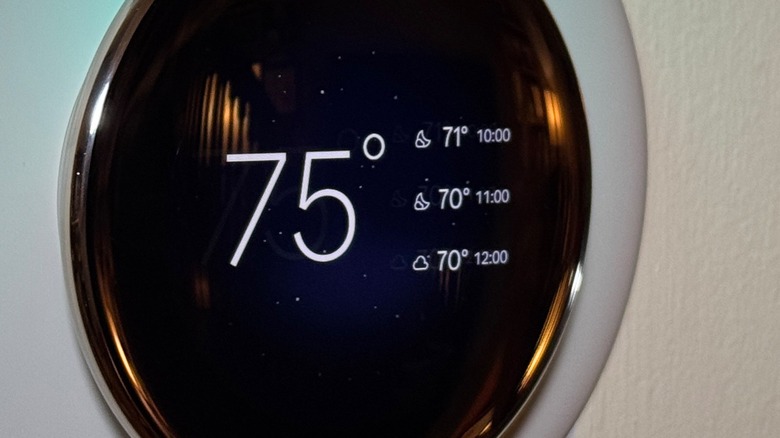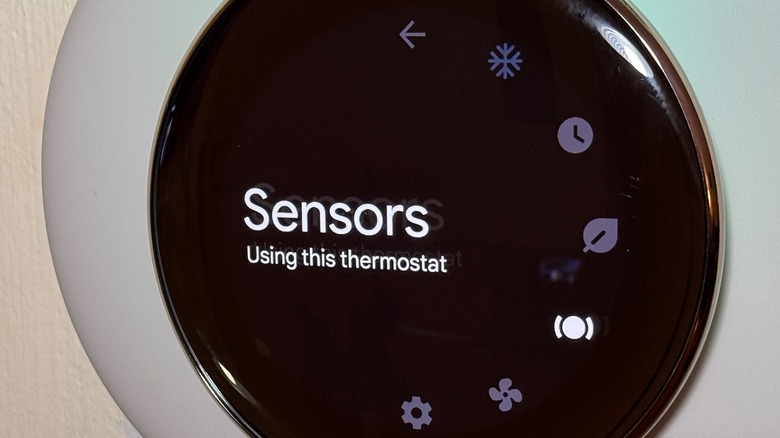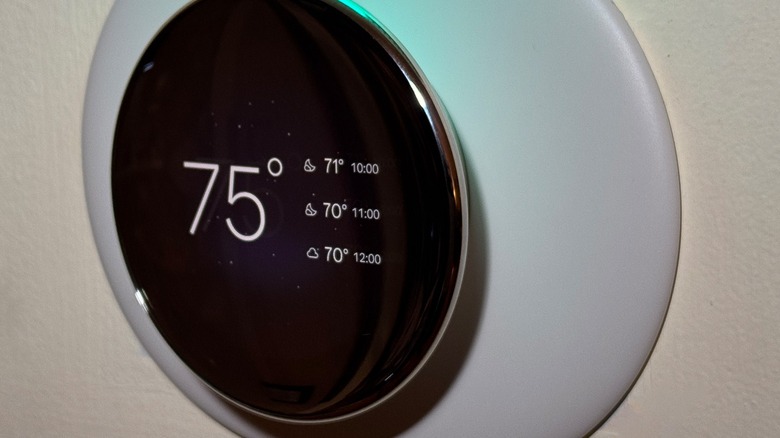Nest Learning Thermostat (4th Gen) Review: A Beautiful, Costly Addition To Your Smart Home
- Beautiful Design
- Intuitive interface
- App-controlled convenience
- Includes extra sensor
- Expensive
- The “learning” part needs work
We may receive a commission on purchases made from links.
One of the earliest steps into converting your home into a smart home, Google's Nest Thermostat is also one of the easiest devices for a DIY'er to integrate. A thermostat is usually very easy to install and can reap you benefits almost immediately. But the Nest Learning Thermostat has been lacking a hardware update for almost a full decade.
Of course, thermostats, and even smart thermostats don't need a ton of power to operate. There are no new apps or major software upgrades that require additional hardware, or RAM that would make a faster upgrade cycle necessary. Plus, the third-generation Nest Learning Thermostat looked pretty good — it didn't need an upgrade. I've had my third-generation Nest in my home for nearly 10 years.
But an upgrade it got, and the new fourth-generation learning thermostat has gotten even more attractive and functional. In fact, it's quite a leap forward, but it may not be for everyone. I've been using the latest Nest Learning thermostat (provided by Google for this review) for around three weeks and this is my full review.
Bold looks
The new Nest thermostat has a bold look that one might say was inspired by the Pixel Watch 3. The face of the thermostat is all glass, and most of that is screen. On the very edge, the glass flows right into the bangle — as Google calls it. This is a metallic trim that runs around the circumference of the thermostat. The whole casing sits about an inch off the wall. The shaft is a white plastic, as is the cover plate. Together, those are really the only cheap-looking parts of the device. Overall, it's a truly stunning look.
The bangle is the only part of the thermostat that rotates. It turns so you can adjust the temperature, and the whole unit depresses to enter menus and make selections — just like previous generations. The menus in the Nest's software are slightly different than previous generations, but it's easy enough to use.
Installation is easy
Installing the Nest Thermostat requires a decent amount of DIY aptitude — you are wiring up your central air conditioner and furnace after all. Google recommends you turn off the power when you do so. Everything is low voltage, so there's no risk of physical harm, but it's still a good idea to avoid potentially damaging the equipment.
As always, it's highly recommended that you take a photo of the wiring to your old thermostat that you're replacing. This helps you know where to run the wires on the new unit (and reinstall the old thermostat if anything goes south). Unfortunately, if you have a third-generation thermostat, the base plat is not the same size. It would have been amazing if previous Nest owners could just remove the old thermostat and pop on the new one without having to rewire. Sadly, the old base plates are too big for the new thermostat.
Nest also includes the aforementioned plastic plate to cover up any remnants of your last thermostat — old holes, or paint for example. The new cover plate is round, while my previous one was rectangular. Unfortunately, the new plate doesn't cover the entire area the old one did, so if this is the specific trade-up you're doing, you may need a little bit of paint to match your newly-uncovered drywall.
Wiring the thermostat is easy — just press down the buttons where the wires are meant to go and release them to lock the wires into place. If you want to use the cover plate, be sure to attach that to the base first, wire it up, and then two screws hold it all in place. Nest includes all the hardware you'll need to get it installed.
Working the thermostat through the app
Once you're ready to complete the installation, just open up the Google Home app and hit the plus sign. Follow the prompts and before you know it, you'll be ready to go. I actually adjust temperature more in my Vivint app than the Google Home app. It's a lot more convenient for me.
Once it's all set up, the Nest thermostat starts to learn your patterns and behaviors to try to save you some money down the line. If you always wake up and turn the air conditioning off, the thermostat will learn that and before long it will anticipate that need. That sounds good in theory, but in practice it can get a little annoying.
Over the years, we've had issues where the thermostat will suddenly adjust he temperature to what it thinks you want, only to have one of us open the app and kick it back to where it belongs. Then there are times when the Nest thermostat will prompt you to switch to an eco-friendly mode. This mode will put more of an emphasis on being environmentally friendly over comfort or preferences.
Both of these are completely optional. You can simply just have the thermostat be an app-connected thermostat and that's it.
Farsight
For a long time, the Nest thermostat has been able to tell if there was someone in front of it, or walking past it. When it detected someone, the display lit up. Now, the same thing happens, but you have your choice of "Farsight" home screens that can display the weather outside or an assortment of clocks and widgets. You can even see animated Farsight displays showing something like a lightning bolt striking if the weather gets bad enough.
It this functionally necessary? No. It's just a fun embellishment on a screen that is pretty, but doesn't really have a practical use when you're not using it. Personally, I'm here for it. It's a great use of the much larger display in play with this 4th Generation Nest Thermostat.
The Farsight display also changes depending on how close you are to the thermostat with a single piece of information when you're roughly ten feet away, to a more complete set of information once you get five feet away. My thermostat faces two staircases, so we don't see the former all that much.
External temperature sensor included
One thing that has changed with this generation of Nest is the fact that an external temperature sensor comes included with the thermostat now. Basically, the way this works is you can set up the temperature sensor anywhere in your house. You can also set up multiple sensors if you want. From there, you can tell the thermostat which sensor to get its readings from.
For example, my office is in my basement and when my wife goes to work, my house is empty all day. So, from 9am until 3pm, I can tell the thermostat to run the heating or cooling based on the sensor in my office, rather than the thermostat itself on the main floor. There's a huge temperature swing in my house from floor to floor, so by telling the Nest to use the basement sensor, I'm saving quite a bit of cooling power because the basement is like a meat locker.
When my wife is home, you can tell the Nest to use the temperature sensor in the Nest itself, or a different sensor elsewhere in the house. You can also compromise and tell Nest to use an average of all the sensors in the house. It's pretty slick and a great addition to homes whose temperature swings majorly depending on where you are.
Nest 4th Generation Learning Thermostat Price, Availability, and final verdict
The 4th Generation Nest learning thermostat costs $279.99 which is very, very not cheap. That price is tempered somewhat by the fact that it ships with an external temperature sensor in the box. That sensor normally costs $39.99 on its own, so it's not a huge savings, but it helps. You can buy the thermostat from Google's website or other retailers like Amazon or Best Buy.
Considering you can get a more basic Nest Thermostat for $129 — which doesn't look as nice (but still looks pretty nice) — the full $280 might steep for this device. This will be for those who only want the best in their home and want a super classy and futuristic look — and are willing to pay for it.
Overall, this is a beautiful addition to your home in an appliance that isn't normally known to be beautiful. Most thermostats are a white box screwed to the wall. The Nest adds a lot of class and charm to an otherwise boring box. Plus, it's easy to use, and intuitive. The price is on the steep side for sure, but this is simply one of the best thermostats you can buy and it comes at a premium. Whether that premium is too high is up for you to decide.
